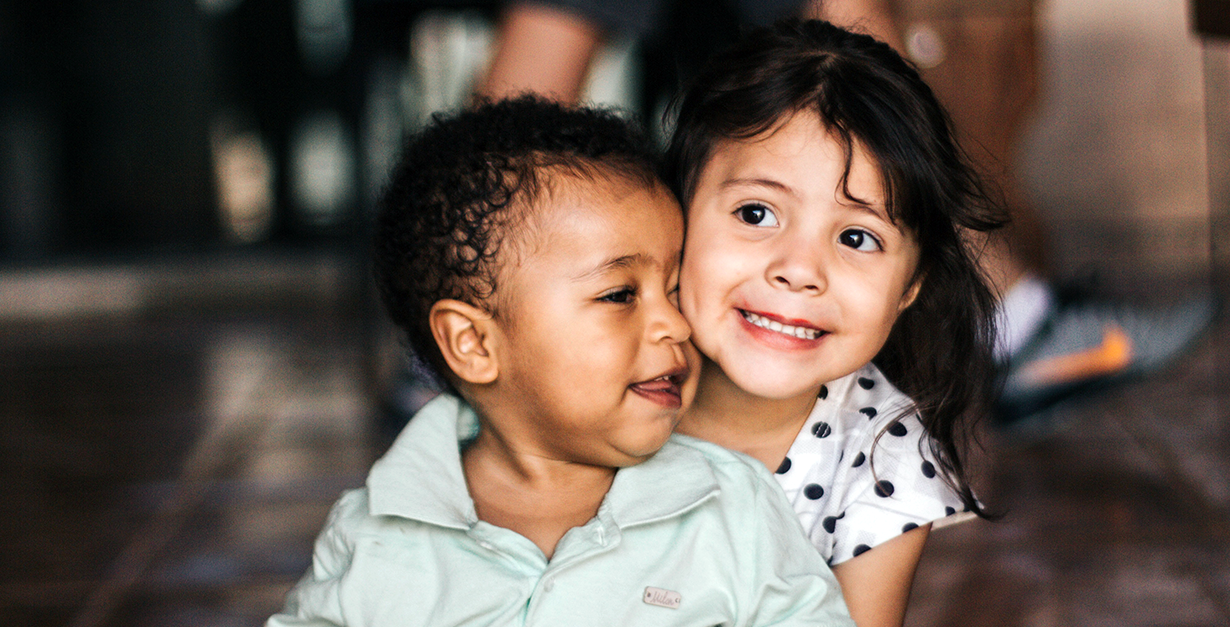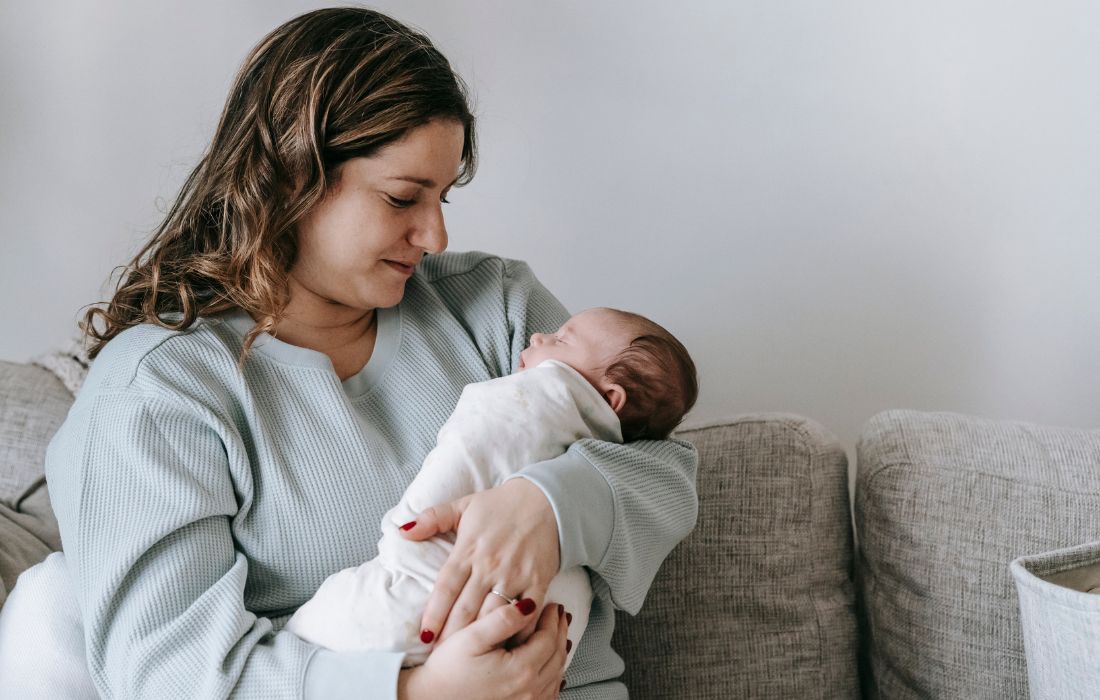My Children Won’t Sleep — Tips for When Nobody is Sleeping
There’s an expectation that when you bring home a new baby, you’ll be tired. When it’s a first baby, it’s hard, but manageable. Add a new baby to the mix, and suddenly multiple children won’t sleep.
What can you do? Many tired parents call me for help in getting all their children to sleep better. Some are upset that they have repeated a negative sleep habit with their second child. Others find their level of sleep deprivation from having two children up at night more than they can bear. All of these parents notice that it is affecting their mood, their marriage and their children’s temperaments. It’s never too late to improve your children’s sleep habits. It may take longer with an older child or be more challenging to sleep coach two children. It’s not impossible.
Learn:
- How to use separate bedrooms
- Sleep coaching in a shared room
- What to do if you’re on your own
 When Children Won’t Sleep in Separate Bedrooms
When Children Won’t Sleep in Separate Bedrooms
If your children are in separate bedrooms then you can sleep coach them both using The Shuffle. Since you are already up with one child you might as well address both child’s sleep habits! Sleeping coaching a baby and a toddler/preschooler at the same time is easier if two caregivers are available at bedtime. One parent puts the baby to sleep and the other parent puts the toddler/preschooler to sleep using the Shuffle.
Many parents tell me they are worried about one child waking the other child in the sleep coaching process so as a result they have been rushing in to soothe one child in order to avoid the other child waking up. Try not to fall into this trap. You are only going to perpetuate one child’s night wakings by reinforcing one or both children’s sleep crutches. Whether you sleep coach one child at a time or both together you risk them waking each other up during the night either way!
If one child wakes the other then you might want to go quickly first to the older child who has been woken up. For instance, if you are sleeping shaping with a six month old, and the baby is waking up your two year old, go to the two year old first and reassure her, tell her that the baby is okay and she should go back to sleep. Then go tend to the six month old. If both parents are home, then divide and conquer, one of you with each child. Don’t panic and reinforce any negative habits with your toddler that you are trying to change; such as, laying down with her to get her back to sleep quickly and quietly.
Want to read more about sleep training siblings?
Read: Sleep Training Siblings — Navigating Sleep Two at a Time
Sharing a Room
If you want your baby to share a room with an older sibling but your children won’t sleep, I recommend to sleep coach the baby first. Then move them to the older sibling’s room. That may mean you modify the Shuffle and sleep coach your baby in the crib in your room where they may be sleeping already.
If your children are already sharing a room then another option is to move the older sibling out of their room temporarily, until the baby is consistently sleeping through the night. This may mean the older child sleeps in a makeshift bed in your room. Explain to your older child that this is just temporary until their baby sibling learns how to put themselves to sleep. Teach the older sibling good “sleep manners”-no talking to or playing with the baby when you move them back in to the shared room. Explain how special it is to share a room and how important it is to have good sleep manners.
In the case where you are sleep coaching two children (singletons or multiples) who share a room (whether they are both in beds or cribs or not), you can still sleep coach at the same time and use the Shuffle techniques. Often one parent will sit between the beds or cribs and go over to the individual bedsides as needed to comfort each child. If both parents are available, you can each sit by one of your child’s bedside or crib during the first Shuffle position.
If your children are very close in age, you might like this advice for twins:
Read: Sleep Training Twins — Tips Just for Coaching Two at Once
One Parent and More than One Child to Put to Bed
Generally, put the youngest one to bed first. If they are close in age, you may want to apply some advice for twins. Depending on age, personality and degree of sibling rivalry, the bigger one may or may not want to listen to the baby’s stories and songs and be part of the baby’s good night rituals before going to bed. If not, make sure the older child keeps busy with a quiet game or activity so she won’t keep interrupting the baby’s bedtime in a manner that is disruptive or stimulating. You don’t want the 3 year old running in constantly while you are trying to get the younger one to sleep.
When my daughter Gretchen was a baby and needed a nice quiet pre-bed nursing or bottle, her Dad wasn’t home to care for our other daughter. By the time Gretchen was about one and Carleigh three, I could read a “young” book to the two of them in Gretchen’s room and then Carleigh would wait for me in her room while I put Gretchen in bed. As soon as Gretchen was down (she knew how to put herself to sleep so I did not have to stay in her room), I’d go to Carleigh and read her an “older book” and give her some mom time.
If you are sleep coaching both or your youngest child who needs an earlier bedtime then I would wait for an evening where both parents can be home at bedtime or recruit a friend or family member to help you. One of you would do the Shuffle with the baby and the other with your toddler.
 Two Parents with Two Different Bedtimes
Two Parents with Two Different Bedtimes
If two parents are home in the evening, one may care for the baby (often the mom if she’s nursing) and one takes care of the older child or children. Switch off some of the time, so each child knows how to go through her bedtime routine with each parent. Make sure both children get a few special good-night moments with both parents. It helps if everyone makes the children’s bedtime a priority for an hour or so-take care of other household tasks a little later. Dirty dishes don’t bawl in the middle of the night if you neglect them for an hour.
One Family’s Strategy
“We stagger our children’s bedtimes” said Kathleen, whose children, Maude and Sean are 26 months apart. While Kathleen is busy with Maude, Sean understands that it’s his little sister’s special time with Mom. He gets a 30 minute video, a quiet one suitable for evening and/or special playtime with his dad. Then he gets to choose if Dad puts him to bed, or if he wants some mom time. The other parent comes in for a final message of sweet dreams and a good-night kiss. We set up this system when Maude was an infant and Sean was two, and it was still working with just a few minor tweaks when he was four a half.”
Do you need to read up on The Shuffle?
Read: The Sleep Lady Shuffle: How to Gently Sleep Train your Baby
Sleep Coaching a Younger Sibling
When I do sleep coaching with children from around age 2 ½ on, I encourage parents to start with a family meeting. Explain the expectations and find a way of getting the child to invest in her sleep education. The same holds true when you are training a younger sibling. Explain to the older child what’s going on and help her feel like she’s a part of it.
Depending on the age and sleep skills of the older child, help her think of herself as a sleep role model for the baby. Tell her the baby needs to know how to get herself to sleep, just like her big sister does. Explain that when the baby learns, she won’t cry as much. In the meantime you have to be with her, or you have to go check on her. The older child will let you go more easily if you explain and make her an ally. Hopefully she won’t barge in as often with demands on you just as you are getting the little one to drift off to sleep. Your goal, as always, is to prevent the older one from feeling displaced. Instead, you want to make her feel even more needed, more loved, more important.
Have no idea where to begin solving your child’s sleep issues?
Start with this guide.


